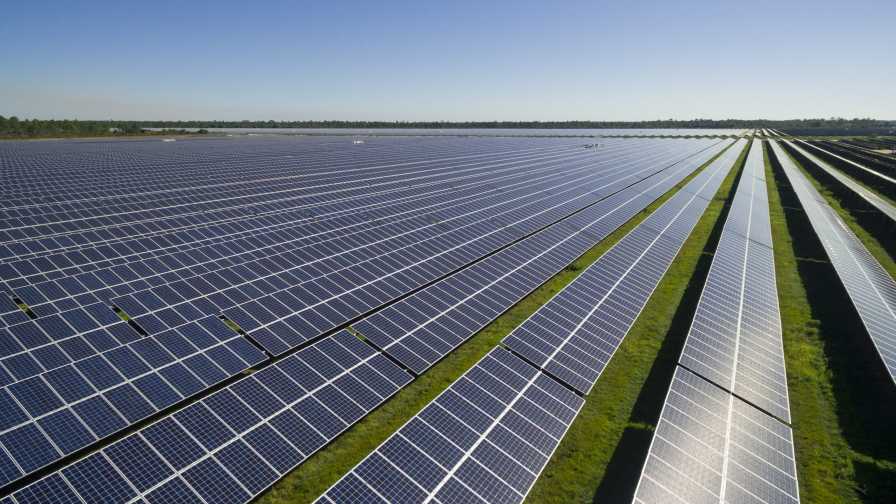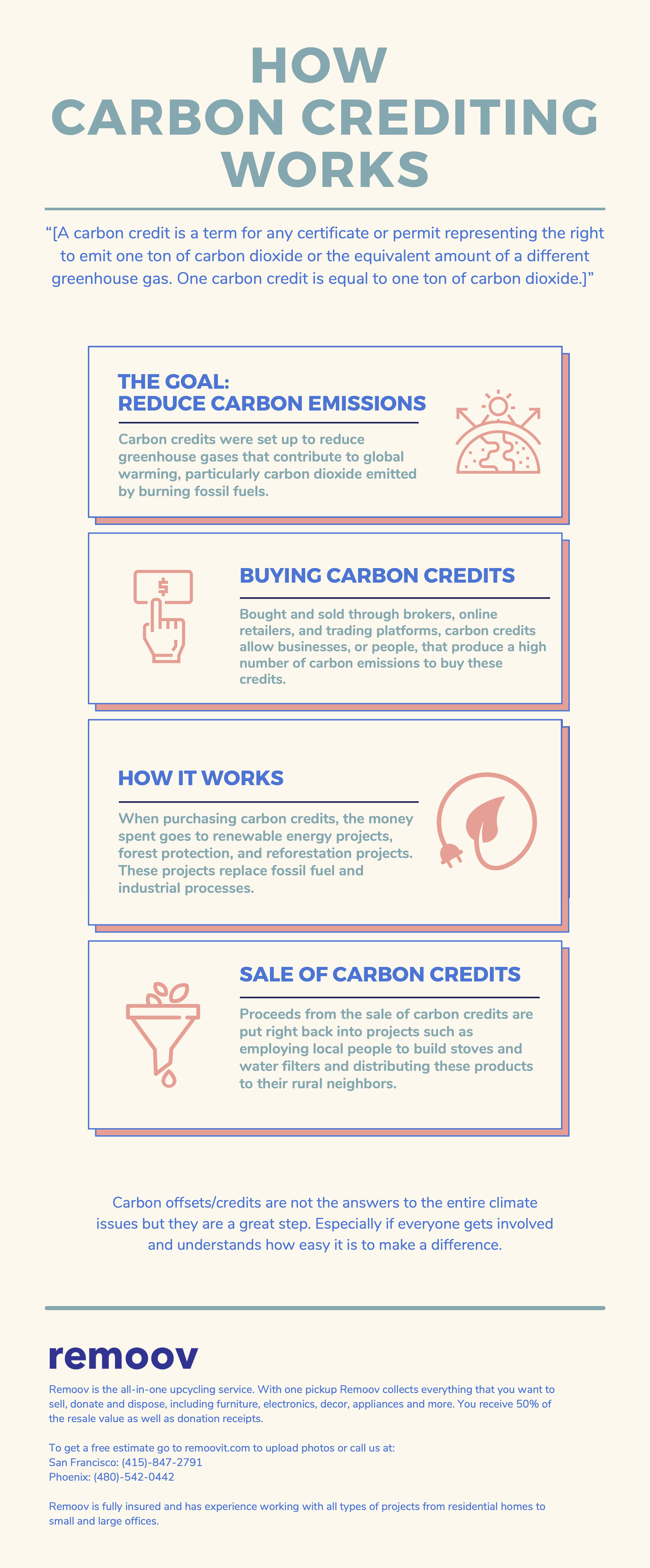“[A carbon credit is a term for any certificate or permit representing the right to emit one ton of carbon dioxide or the equivalent amount of a different greenhouse gas. Carbon credits are a component of international attempts to mitigate the growth of greenhouse gases. One carbon credit is equal to one ton of carbon dioxide.]”
*This is not a word-for-word definition, but slightly simplified.
COMPANIES Vs INDIVIDUALS
The world of corporate carbon credits is a bit complicated and not what will be discussed today. This article is mostly focused on carbon credits for individuals, what they are, how to use them, and how they help the environment.
CARBON
Carbon is in carbon dioxide, which is a greenhouse gas that traps heat close to earth. It helps earth hold the energy it receives from the sun and keeps our oceans from being frozen solid. But an over abundance of CO2, i.e. the burning of a tremendous amount of fossil fuels across the planet, causes the earth’s temperature to rise as well as the amount of carbon in the atmosphere. Not good.
CARBON CREDITS- THE GOAL: REDUCE CARBON EMISSIONS
Carbon credits were set up to reduce greenhouse gases that contribute to global warming, particularly carbon dioxide emitted by burning fossil fuels. Reducing emissions is a primary way to solve the climate crisis. After a carbon credit is purchased it is permanently retired so it can’t be reused.
HOW IT WORKS
Bought and sold through brokers, online retailers, and trading platforms, carbon credits allow businesses, or people, that produce a high number of carbon emissions to buy these credits. When purchasing carbon credits, the money spent goes to renewable energy projects, forest protection, and reforestation projects around the world. These renewable energy and energy efficiency projects replace fossil fuel and industrial processes.
Offsetting one ton of carbon means there will be one less ton of carbon dioxide in the atmosphere than there would otherwise have been. For example, when solar energy companies sell carbon offsets, it helps these projects become more viable.
OUR CARBON IMPACT
The choices we make have an impact on the size of our carbon footprint. As businesses and individuals we generate unavoidable greenhouse gas emissions with:
- Airline flights
- Buying a morning coffee
- Purchasing products that use raw materials
- There’s emissions from the food you eat, heating and cooling your home, the stuff you buy—it all adds up.
There are many, many ways to reduce your personal carbon footprint. This includes switching to renewable energy, taking public transport, or moving away from carbon-intensive products.
HOW CAN I BUY CARBON CREDITS
Carbon off-setting is a way to engage and understand how to be part of a more sustainable world and feel like you are contributing.
- This carbon calculator on TerraPass will show you how many credits you need to buy to off-set your airline trip or weekly vehicle emissions.
- To find honest companies that are actually doing what they promise with the purchase of your carbon offsets, check out a company like Green-e, which lists companies meeting stringent standards on their website.
- Gold Standard also provides a list of verified projects.
- The price of carbon offsets varies widely from $1 per ton to $50 per ton. The price depends on the type of carbon offset project. The average is about $3-6 per ton.
MANY POSITIVE PROJECTS
Buying carbon credits from certified activities that are all part of reducing global emissions, enhancing livelihoods, and protecting the planet are the benefits of these projects. Some of the projects in operation that sell carbon credits include:
- Wind and solar projects that replace fossil fuel-powered plants.
- Low-cost household devices that eliminate the need for extra energy.
- Methane capture from landfill gas and agriculture.
- Afforestation projects.
- Forest protection from illegal logging.
- Protecting ecosystems.
- Reducing or removing emissions from the atmosphere.
- Supporting community development by installing efficient technology.

AROUND THE WORLD
Because there are no borders in the atmosphere, it does not matter where the project you are buying carbon credits from is located. Rising carbon levels is a world-wide problem.
- Many projects operate in less economically developed countries, thus creating a bigger impact for the local community.
- For example, the Kariba Project in Zimbabwe is protecting a vast expanse of forest by improving local livelihoods with training opportunities, alternative income streams, and access to safe water and healthcare.
- Reducing greenhouse gas emissions, by replacing fossil fuel-derived energy with energy from renewable sources.
- Removing emissions from the atmosphere by planting more trees that capture carbon from the atmosphere.
- Capturing and destroying emissions of methane gas captured from wastewater.
LEGITIMATE PROJECTS
These measurable and verifiable emission projects must adhere to a rigorous set of criteria to pass approval by third-party agencies, like the Kariba Project mentioned above. These projects are also reviewed by a panel of experts at a leading carbon offset standard like Verra or Gold Standard.
An excellent venture called the Paradigm Project subsidizes highly efficient wood-burning stoves and easy to use water filtration units to rural families in Kenya. Much deforestation is brought about by families cutting wood to boil water and cook. The filters help cut the amount of firewood and are much more efficient at converting wood fuel into usable energy.
Proceeds from the sale of carbon credits are put right back into:
- Employing local people to build stoves and water filters.
- To distribute these products to their rural neighbors.
- Carbon credit buyers end up improving the health conditions and economic situations of rural Kenyans.
- The project also helps support women’s empowerment as women make up the bulk of the workforce that sells and distributes the cook stoves.
Carbon offsets/credits are not the answers to the entire climate issues but they are a great step. Especially if everyone gets involved and understands how easy it is to make a difference.

Tree Triage also offers these excellent answers to questions quoting 28 different sources; it’s quite authoritative.
- How can I measure and reduce my carbon footprint?
- What role do trees play?
- Can I plant enough trees to offset my carbon footprint?
- What makes it hard to completely offset my impact?
#carbonfootprint #climatechange #sustainability #environment #savetheplanet #ecofriendly #sustainable #climateaction #globalwarming #zerowaste #gogreen #pollution #co #recycle #reuse #climatecrisis #sustainableliving #nature #greenhousegases #environmentallyfriendly #reducereuserecycle #climate #plasticfree #airpollution #green #saveourplanet #climatechangeisreal #renewableenergy #carbonneutral
